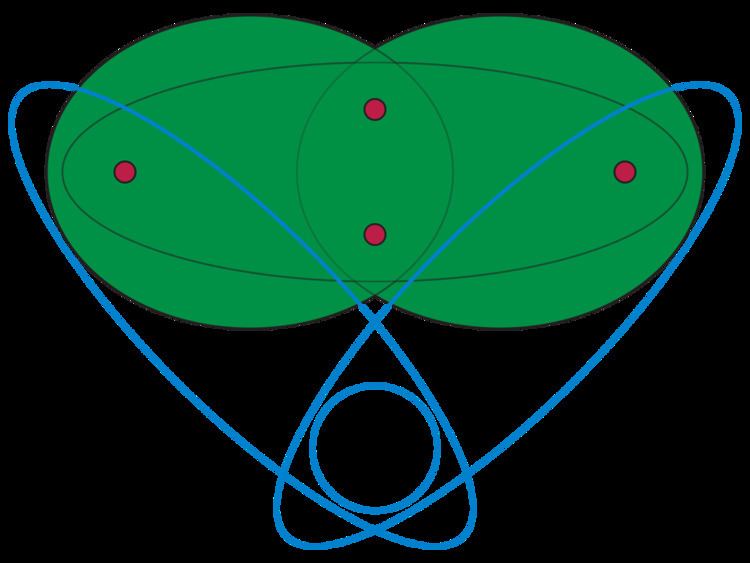 | ||
In combinatorial mathematics and extremal set theory, the Sauer–Shelah lemma states that every family of sets with small VC dimension consists of a small number of sets. It is named after Norbert Sauer and Saharon Shelah, who published it independently of each other in 1972. The same result was also published slightly earlier and again independently, by Vladimir Vapnik and Alexey Chervonenkis, after whom the VC dimension is named. In his paper containing the lemma, Shelah gives credit also to Micha Perles, and for this reason the lemma has also been called the Perles–Sauer–Shelah lemma.
Contents
Buzaglo et al. call this lemma "one of the most fundamental results on VC-dimension", and it has applications in many areas. Sauer's motivation was in the combinatorics of set systems, while Shelah's was in model theory and that of Vapnik and Chervonenkis was in statistics. It has also been applied in discrete geometry and graph theory.
Definitions and statement
If
In terms of these definitions, the Sauer–Shelah lemma states that if
The bound of the lemma is tight: Let the family
The number of shattered sets
A strengthening of the Sauer–Shelah lemma, due to Pajor (1985), states that every finite set family
For a restricted type of shattered set, called an order-shattered set, the number of shattered sets always equals the cardinality of the set family.
Proof
Pajor's variant of the Sauer–Shelah lemma may be proved by mathematical induction; the proof has variously been credited to Noga Alon or to Ron Aharoni and Ron Holzman.
Base: every family of only one set shatters the empty set.
Step: Assume the lemma is true for all families of size less than
By the induction assumption, these two subfamilies shatter two collections of sets whose sizes add to at least
None of these shattered sets contain
Some of the shattered sets may be shattered by both subfamilies. When a set
A different proof of the Sauer–Shelah lemma in its original form, by Péter Frankl and János Pach, is based on linear algebra and the inclusion–exclusion principle.
Applications
The original application of the lemma, by Vapnik and Chervonenkis, was in showing that every probability distribution can be approximated (with respect to a family of events of a given VC dimension) by a finite set of sample points whose cardinality depends only on the VC dimension of the family of events. In this context, there are two important notions of approximation, both parameterized by a number ε: a set S of samples, and a probability distribution on S, is said to be an ε-approximation of the original distribution if the probability of each event with respect to S differs from its original probability by at most ε. A set S of (unweighted) samples is said to be an ε-net if every event with probability at least ε includes at least one point of S. An ε-approximation must also be an ε-net but not necessarily vice versa.
Vapnik and Chervonenkis used the lemma to show that set systems of VC dimension d always have ε-approximations of cardinality
In turn, ε-nets and ε-approximations, and the likelihood that a random sample of large enough cardinality has these properties, have important applications in machine learning, in the area of probably approximately correct learning. In computational geometry, they have been applied to range searching, derandomization, and approximation algorithms.
Kozma & Moran (2013) use generalizations of the Sauer–Shelah lemma to prove results in graph theory such as that the number of strong orientations of a given graph is sandwiched between its numbers of connected and 2-edge-connected subgraphs.
